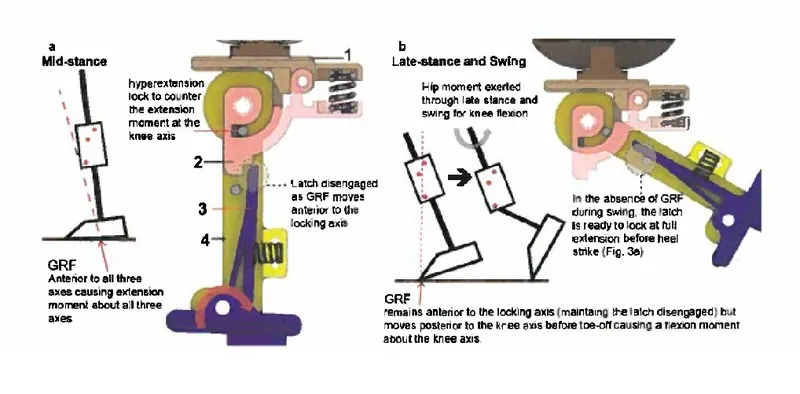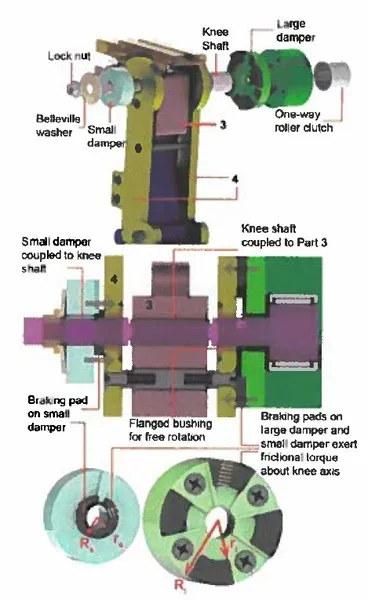Design of Mechanism for a Low-Cost, Completely Passive Prosthetic Knee for Users with Above-Knee Amputation
This passive device is a prosthetic for above-knee amputees and is especially suited for developing countries with limited availability of advanced medical care.
Researchers
-
passive artificial knee
United States of America | Granted | 10,405,997
Figures
Technology
Optimal mechanical components were designed using biomechanical modeling and inverse dynamics analysis. The prosthetic knee includes a linear spring and friction dampers that engage and disengage at optimal times in the gait cycle to provide able-bodied kinematics with minimal patient energy expenditure. The spring and damping system provide early stance flexion-extension and late stance and swing control respectively. The design has an automatic early stance lock for stability. The spring stiffness and damper friction may be adjusted for patient and device weight. A small user trial showed a smooth transition from stance to swing and easy usability of the prosthetic. This invention is a passive prosthetic knee design that is low cost with improvements over current devices that could allow large scale manufacturing for widespread use in developing countries.
Problem Addressed
There are an estimated 30 million people worldwide in need of prosthetics and orthotic devices. According to the World Health Organization, 90-95% of amputees in developing countries do not have access to prosthetics largely due to high cost. In India alone, there are approximately 230,000 transfemoral amputees. Most currently distributed above-knee prostheses are inexpensive passive devices that hinder a normative gait and incur frequent mechanical failure. This technology is a low-cost, fully passive prosthetic knee design that closely mimics able-bodied kinematics ideally suited for above-knee amputees in developing countries.
Advantages
- Requires minimal patient energy expenditure
- Passive and low cost
- Allows patients to walk with a normative gait
Publications
Arelekatti, V. N. M., & Winter, A. G. V. (2015). Design of a fully passive prosthetic knee mechanism for transfemoral amputees in India. In 2015 IEEE International Conference on Rehabilitation Robotics (ICORR), (pp. 350-356). Singapore. doi: 10.1109/ICORR.2015.7281224.
Narang, Y. S., Arelekatti, V. N., & Winter, A. G. (2016). The Effects of Prosthesis Inertial Properties on Prosthetic Knee Moment and Hip Energetics Required to Achieve Able-Bodied Kinematics. IEEE Transactions on Neural Systems and Rehabilitation Engineering, 24(7), 754–763. doi: 10.1109/TNSRE.2015.2455054.
Chu, Jennifer. "A Cheaper, High-Performance Prosthetic Knee: Researchers Design Cheap Prosthetic Knee That Mimics Normal Walking Motion." MIT News Office. July 31, 2015.
License this technology
Interested in this technology? Connect with our experienced licensing team to initiate the process.
Sign up for technology updates
Sign up now to receive the latest updates on cutting-edge technologies and innovations.

